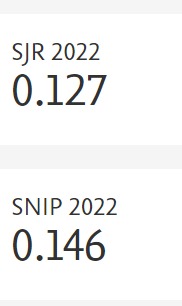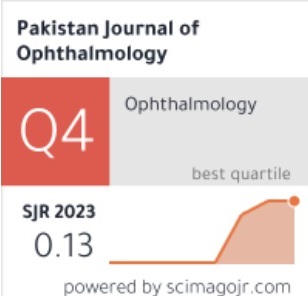Epidemiology of Ocular Trauma in a Tertiary Hospital Setting
DOI:
https://doi.org/10.36351/pjo.v35i1.863Abstract
Purpose: To determine the Epidemiology of Ocular Trauma in a Tertiary Hospital Setting.
Study Design: Cross-Sectional Study.
Place and Duration of Study: Ophthalmology Department, DHQ Teaching Hospital Gujranwala from December 2016- December 2017.
Material and Methods: All patients included in the study had the following data recorded at presentation and follow up; date, age, gender, location and nature of injury, residence place, cause of injury, duration of hospitalization, anatomical site, adjuvant treatment, initial and final best-corrected (Snellen) visual acuity. Data was classified into five groups on the basis of place of eye injury.
Results: The total numbers of patients was 95. Mean age of patients was 31.9 ± 18.1 years. Out of these patients, 80 (84.2%) were males and 15 (15.8%) were females. There were 23 (24.2%) patients in 1-18 years age group, 40 (42.1%) patients in 18-35 years age group and 32 (33.7%) in >35 years age group. The tissues involved during trauma included 22 (33.8%) lid tears, 30 (46.2%) corneal tears, 2 (3.1%) scleral tears and 8 (12.3%) corneo-scleral tears. The most common location of ocular trauma was workplace (31.5%), household injuries (27.4%), sports injuries (7.3%), animal related injuries (8.4% and miscellaneous (25.2%). Best corrected visual acuity (BCVA) improved in 28 (29.5%) cases, deteriorated in 8 (8.4% cases and remained same in 59 (62.1%) cases.
Conclusion: Young patients (18-35 years) are at more risk of ocular trauma especially at work, and this translates into a higher economic burden for the country at large.
Keywords: Ocular Trauma, Road injuries, Domestic injuries.






